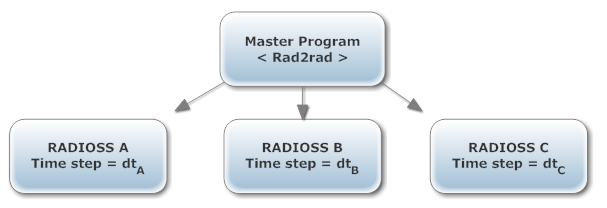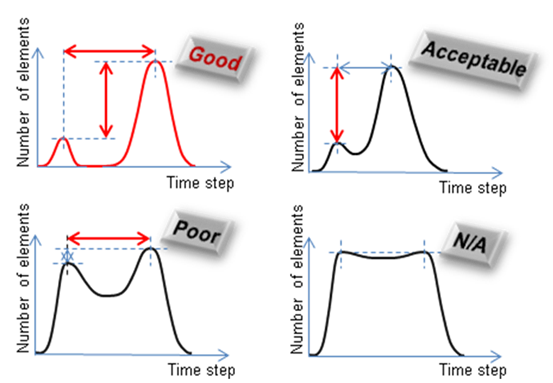Multi-Domain Technique
- Possibility of sub-dividing the whole model into a number of distinct subdomains with clearly defined interfaces/connections between them.
- Different subdomains should be characterized by different mesh sizes and consequently very different minimal time step.
The goal is to improve prediction accuracy at reasonable, possibly advantageous, computation time for models with domains of very different time step sizes.
For example, it is appealing to use Multi-Domain technique to compute large models that have one or more parts finely meshed to capture specific local phenomena such as cracks localization/propagation.
It is even more appealing to use Multi-Domain technique to compute large fluid-structure interaction models, as in aircraft ditching or landing simulations, where fluid elements with high time steps are numerous compared to Lagrange structure elements with very small time steps.

Figure 1.
- Time step sizes
- Domains relative sizes

Figure 2.
- very different mesh densities hence very different time steps
- different formulations like Lagrange, ALE or Lagrange, and SPH, provided the ALE or SPH domain is larger than the Lagrange domain